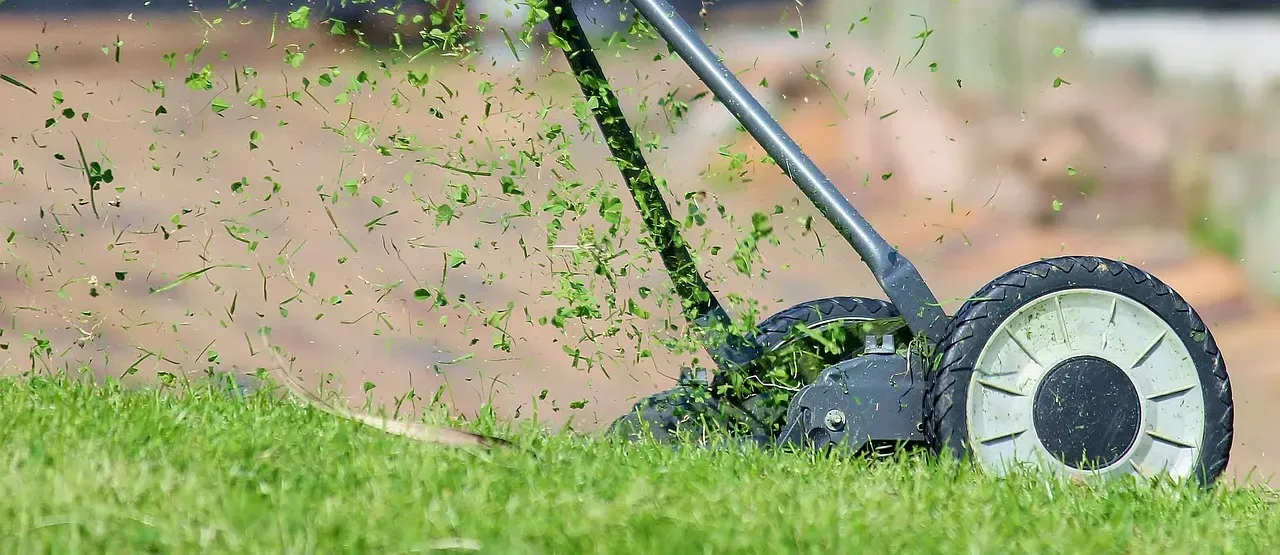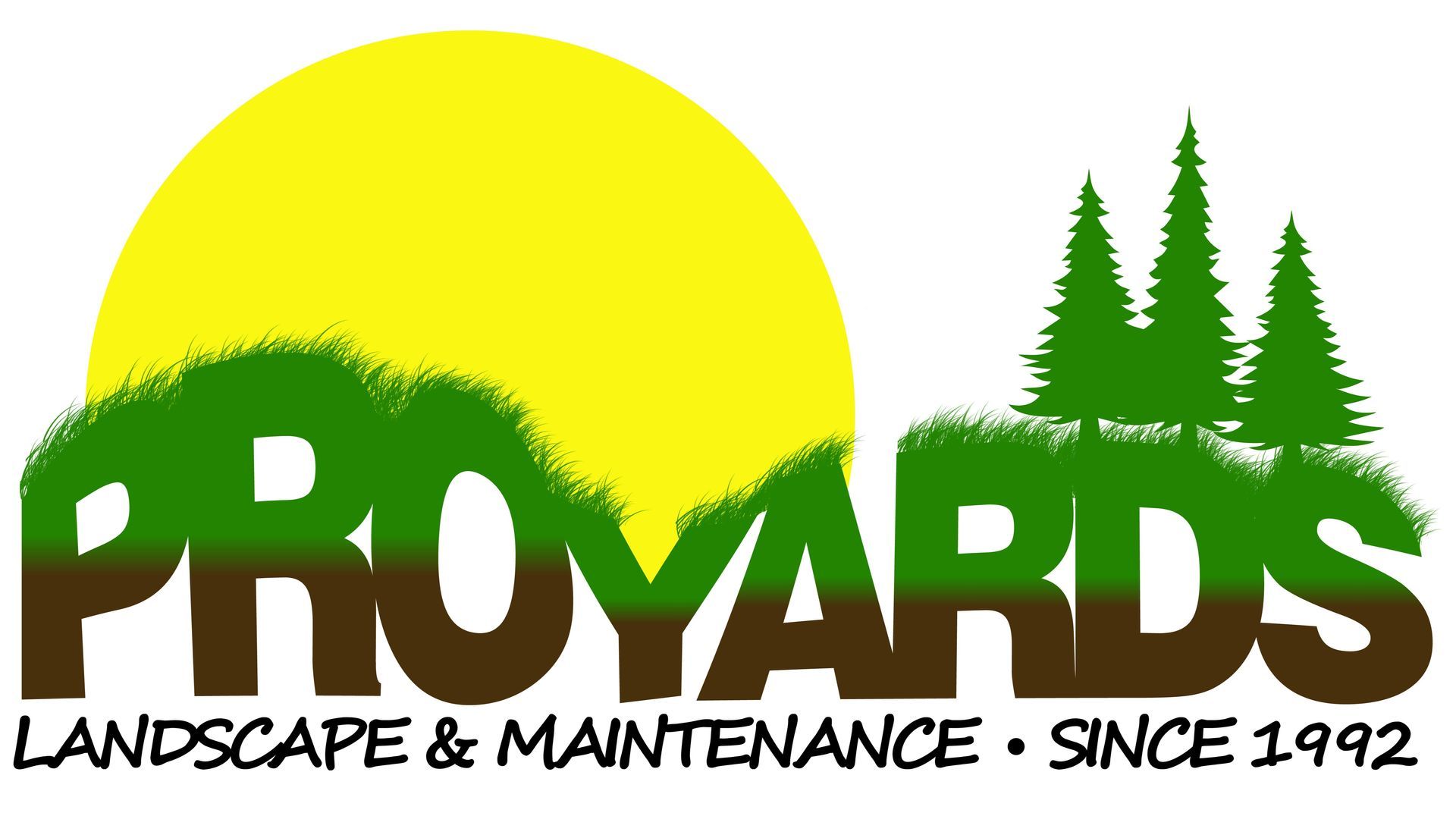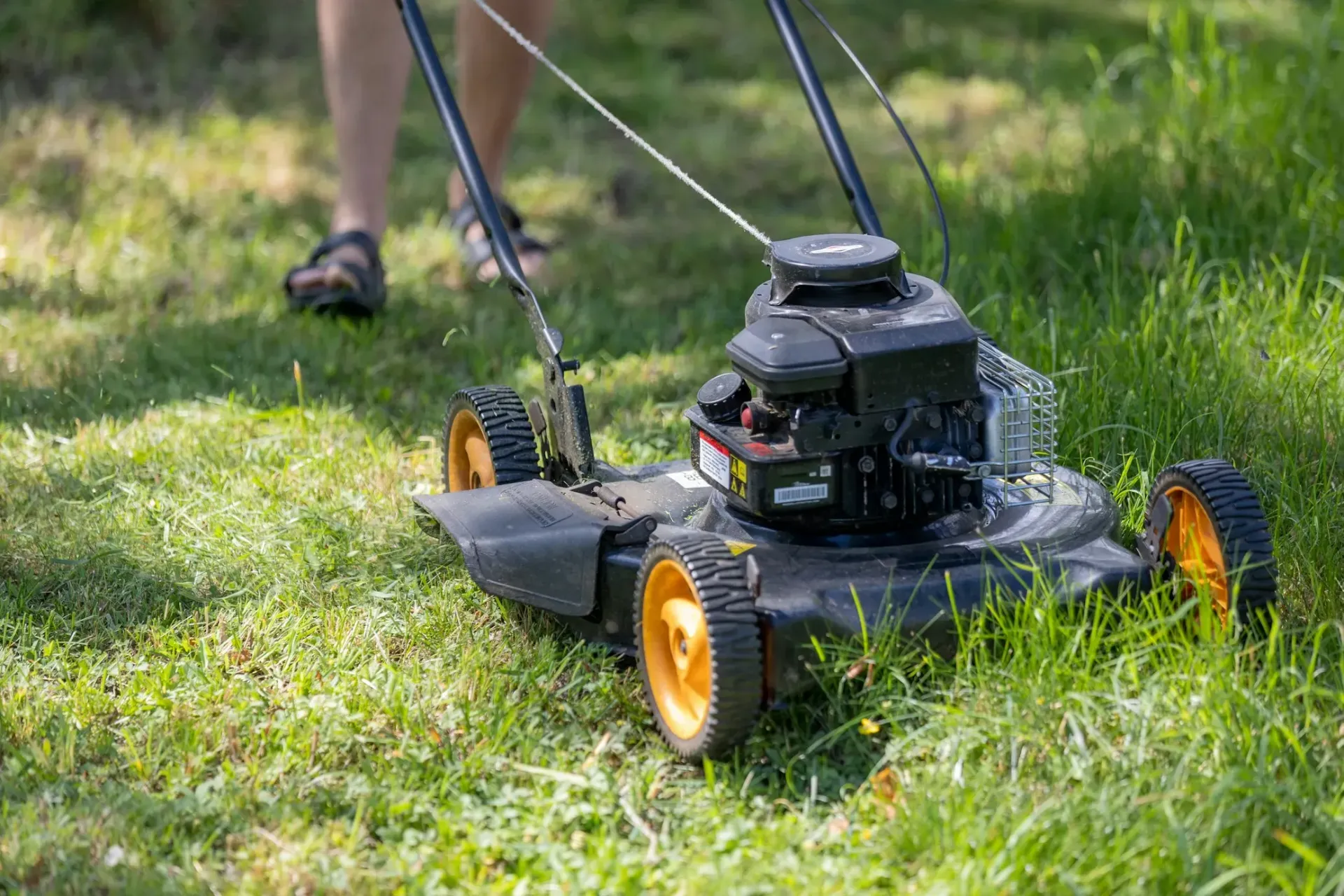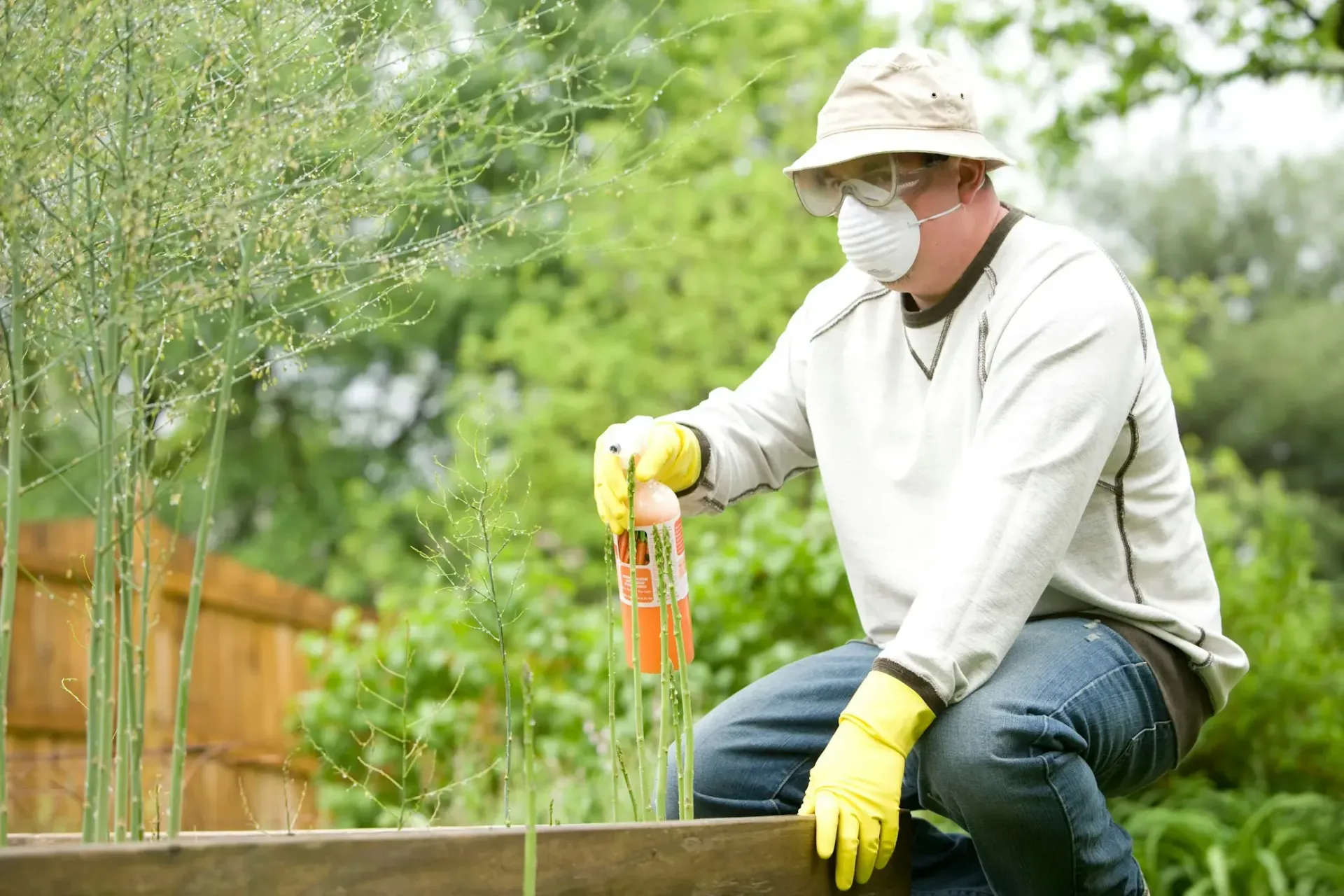
Top Tips to Mow a Lawn Like a Pro: Mastering Lawn Mowing
Mowing a lawn might seem simple, but when you get it right, your grass grows healthier, and your yard looks sharp. Whether you're picking the right mower or avoiding common mistakes, these tips will help you mow like a pro. Get ready to take your lawn care to the next level.
How to Properly Mow a Lawn for a Healthy Yard
Mowing your lawn the right way is key to keeping it looking great and staying healthy. Proper mowing encourages thicker grass growth and prevents weeds from taking over. To start, make sure your mower blades are sharp. Dull blades tear the grass, which leaves it vulnerable to disease. Next, never cut more than one-third of the grass height at a time—cutting too much at once stresses the grass. Finally, vary your mowing pattern each time to avoid compacting the soil and creating ruts.
What is the Best Time to Mow?
Timing matters when it comes to mowing. The best time to mow is in the mid-morning, between 8 a.m. and 10 a.m. By this time, the dew has dried, and the grass is upright, making it easier to cut. Avoid mowing during the hottest part of the day—doing so can stress the grass. Late afternoon, around 4 p.m. to 6 p.m., is another good option if mornings don’t work for you.
Essential Lawn Care Practices
To keep your lawn looking its best, regular care goes beyond just mowing. Water deeply but less often, aiming for about 1 inch of water per week. Aerate your lawn once or twice a year to loosen compacted soil and improve root growth. Fertilize in the spring and fall to give your grass the nutrients it needs. Don't forget to clear debris like leaves and sticks, as these can block sunlight and trap moisture, leading to lawn issues.
Common Mistakes When You Mow the Lawn
Avoid these common mistakes to keep your lawn in top shape. First, don’t mow when the grass is wet—this causes clumping and uneven cuts. Also, cutting the grass too short, known as “scalping,” weakens it and invites weeds. Make sure you’re not using dull mower blades, as they can tear the grass instead of giving it a clean cut. Finally, don’t mow in the same pattern every time; this creates ruts and compacts the soil.
Choosing the Right Lawn Mower for Your Yard
Picking the right mower is crucial for efficient lawn care. Different yards have different needs, so it’s essential to choose a mower that suits your lawn size and terrain. Whether you're working with a small yard or acres of land, having the right mower makes a big difference in how easy and effective mowing will be.
Push Mower vs Riding Lawn Mower
Choosing between a push mower and a riding lawn mower depends on your yard size and terrain:
- Push Mower: Ideal for small to medium-sized yards. They’re more affordable, easier to maneuver in tight spaces, and give you a great workout.
- Riding Lawn Mower: Best for large yards or uneven terrain. They save time and energy, especially if you have a lot of ground to cover. However, they’re more expensive and require more maintenance.
How to Maintain Your Mower Blades
Maintaining your mower blades is essential for clean, healthy cuts. Here’s how to keep them sharp and in good condition:
- Sharpen blades regularly: Dull blades tear the grass, which leads to damage and disease. Aim to sharpen them at least once a season or after 25 hours of use.
- Clean after each use: Remove grass clippings and dirt to prevent buildup that can dull the blades faster.
- Inspect for damage: Check for nicks or bends that may cause uneven cuts. Replace damaged blades immediately.
- Balance the blades: After sharpening, make sure the blades are balanced to avoid vibration that can damage the mower.
Understanding Different Types of Grass
Knowing the type of grass in your yard helps you mow it properly and maintain its health. Different grasses have different needs:
- Cool-season grasses (like Kentucky bluegrass, fescue): Grow best in cooler climates and should be mowed higher (about 3-4 inches).
- Warm-season grasses (like Bermuda, Zoysia): Thrive in warmer areas and prefer a shorter mowing height (about 1-2 inches).
- Shade-tolerant grasses: For yards with more shade, choose grasses like fine fescue, which can handle less sun and may need less frequent mowing.
- Drought-tolerant grasses: These grasses, such as Buffalo grass, need less water and can be cut slightly higher to help conserve moisture.
Understanding the Optimal Mowing Height
Setting your mower to the right height is key for lawn health. Cutting the grass too short stresses it, while cutting it too long can make it look untidy and more susceptible to pests. The right mowing height depends on the type of grass and the time of year.
Why is Mowing Too Short Harmful?
Cutting grass too short, also known as "scalping," can severely damage your lawn:
- Weakens grass: Short grass can't absorb enough sunlight, which reduces its ability to grow and recover.
- Promotes weed growth: Weeds thrive in stressed areas, and a scalped lawn is the perfect place for them to take over.
- Dries out the soil: Short grass exposes the soil to more sun, which can lead to drought stress and unhealthy patches.
How to Avoid Scalping the Lawn
Here’s how to prevent scalping and keep your lawn healthy:
- Set the mower higher: Most grass types should be cut at a height of about 2.5 to 4 inches.
- Avoid cutting more than one-third of the grass height: If the grass has grown too tall, mow in stages, gradually reducing the height.
- Mow regularly: This prevents the need for drastic cuts that can lead to scalping.
Setting the Mower at the Highest Preferred Height
For a healthier lawn, it’s often best to mow at the highest recommended height for your grass type:
- Cool-season grasses: Set your mower to 3 to 4 inches during the growing season.
- Warm-season grasses: Typically prefer 1 to 2 inches, but in high heat, you can mow a bit higher to reduce stress.
- Adjust seasonally: Raise your mower height slightly in summer to protect grass from heat stress, and lower it in the cooler months.
Effective Lawn Mowing Techniques
Mowing your lawn with the right technique not only makes it look better but also promotes healthier growth. How you mow can impact the grass’s ability to recover and stay green. Using the correct patterns and techniques helps avoid problems like uneven cuts, ruts, and lawn damage.
Creating an Ideal Mowing Pattern
Mowing in a consistent pattern helps achieve an even cut and prevents ruts. Here's how to create the best mowing pattern:
- Change direction each time: Alternate your mowing pattern each time you mow to avoid creating ruts and compacting the soil.
- Overlap your passes: Slightly overlap each pass to ensure no grass is missed, leaving an even finish.
- Avoid sharp turns: If you turn too quickly, you can damage the grass or create uneven spots.
How to Cut Your Lawn Evenly
For a smooth, professional-looking lawn, keep these tips in mind:
- Keep the blades sharp: Dull blades lead to ragged cuts, which makes the lawn look uneven.
- Mow on dry grass: Wet grass clumps and can result in an uneven cut.
- Set a steady pace: Move the mower at a consistent speed to ensure the grass is cut evenly throughout the yard.
Dealing with Ruts in the Lawn
Ruts are caused by repeated mowing in the same direction or by heavy equipment. Change your mowing direction regularly to prevent ruts from forming. Fill in existing ruts, to do this, use a mixture of topsoil and grass seed to fill in ruts, and allow the grass to grow back evenly. Lastly, avoid mowing when the ground is wet: Wet soil compacts more easily, making ruts worse.
Handling New Grass and Mowing
Mowing new grass requires special care to ensure it grows strong and healthy. You don’t want to rush the process, as young grass is delicate and can easily be damaged if mowed too soon. Proper timing and technique will help establish a thick, lush lawn.
When is New Grass Ready to Mow?
New grass needs time to establish before its first mow. Here’s when it’s ready:
- Wait until the grass is 3-4 inches tall: Most grass types should grow to about this height before their first cut.
- Ensure the roots are established: Lightly tug on the grass—if it resists, the roots are strong enough for mowing.
- Typically, about 3-4 weeks after seeding: Give the grass at least this much time to establish itself.
Special Care for Mowing a New Lawn
Mowing a new lawn requires extra care to avoid damaging the fragile grass:
- Use a sharp mower blade: A clean cut helps prevent stress on young grass.
- Mow when the grass is dry: Wet grass can clump and damage new seedlings.
- Set your mower higher: For the first few mows, keep the height at the top recommended setting for your grass type to avoid scalping.
Using Lawn Weed Control Products on New Grass
When dealing with weeds in new grass, be cautious:
- Wait at least 2 months before applying weed control: Applying too early can damage young grass.
- Use products labeled safe for new lawns: Some weed killers are too harsh for newly planted grass.
- Spot-treat if possible: Instead of widespread application, spot-treat weeds to avoid stressing new grass.
Conclusion
Mastering lawn mowing takes time, but with the right tips and techniques, you can turn your yard into a lush, green space that enhances your home’s curb appeal. Remember, mowing isn't just about cutting grass—it's about nurturing your lawn to grow healthy and strong. By understanding the proper mowing heights, using the right mower, and avoiding common mistakes, you’ll be mowing like a pro in no time.
When it comes to maintaining your yard, leave it to the experts at ProYards. Whether you're in Salt Lake City, Lehi, Saratoga Springs, Eagle Mountain, or American Fork, we offer a full range of services, including fertilization, hardscapes, irrigation, landscaping, lawn care, tree service, and pest control. Our fully licensed and insured team guarantees top-quality results and exceptional customer service. At ProYards, we pride ourselves on transforming outdoor spaces into beautiful, thriving landscapes.
Ready to elevate your lawn care? Contact ProYards today and let us handle all your yard care needs in Salt Lake, Davis, and Utah counties. From start to finish, we’re committed to providing the best service, ensuring your yard always looks its best.
FAQs
How often should you mow your lawn for optimal health?
It's essential to mow your lawn frequently enough to maintain a healthy lawn, typically every 1 to 2 weeks depending on the grass growth rate. Avoid cutting more than one-third of the grass blade length at a time to minimize stress.
What is the best height to cut the grass?
Set your mower to cut the grass at about 2 to 3 inches high. This height helps keep your lawn healthy by allowing grass to retain water and nutrients more effectively.
Why is it important to keep mower blades sharp?
Using a dull mower blade can tear the grass, which stresses both the lawn and can lead to poor mowing practices. Regular blade sharpening ensures clean cuts, promoting a healthy lawn.
When is it not a good time to mow your lawn?
Avoid mowing when the grass is wet, as it can clog your mower and leave clumps that stress the lawn. It's also best to mow early in the morning or late in the afternoon to avoid the next afternoon's heat.
What is the benefit of mulching grass clippings?
Mulching grass clippings returns important nutrients to the soil, aiding in lawn maintenance and reducing the need for additional fertilizers. It also helps retain soil moisture.
How does the direction you mow affect your lawn?
Changing the direction you mow each time helps prevent soil compaction and encourages upright growth, giving your lawn a more even appearance.
Should you use a riding mower or a push mower?
The choice between a riding mower and a push mower depends on the size of your lawn. Riding mowers are suitable for larger areas, while push mowers are ideal for smaller lawns where more precision is required.
What should you do if your mower leaves piles of long clippings on the lawn?
If your mower leaves piles of long clippings, it may be a sign that the mower blade isn't set correctly, or the grass is too long. Try mowing more frequently or adjusting the mower deck height.
How can you protect your eyes while mowing?
Always wear protective eyewear to shield your eyes from debris and grass clippings that may be thrown by the mower blades during operation.
Is it necessary to use any lawn weed control when mowing?
Depending on the weed situation in your lawn, you may need to incorporate lawn weed control measures. Regular mowing and maintaining a healthy lawn can also naturally minimize weed growth.
Our Services
Contact Information
Phone: (801) 254-2890
Email: proyardcustomers@gmail.com
Business Hours
- Mon - Fri
- -
- Sat - Sun
- Closed
Area We Serve
All Rights Reserved | Proyards









